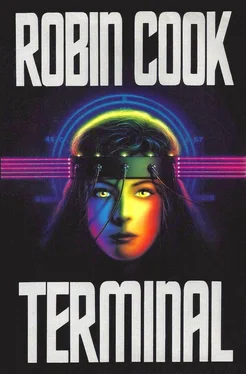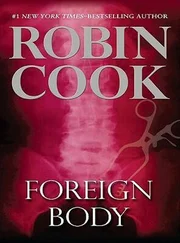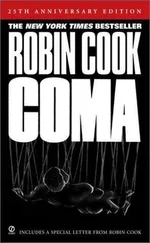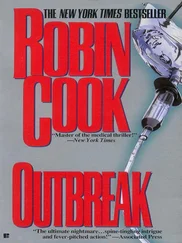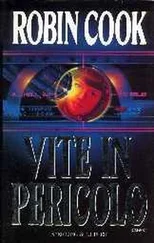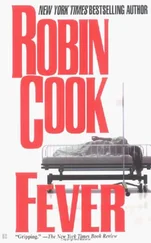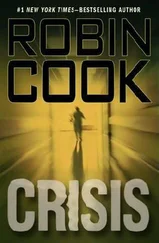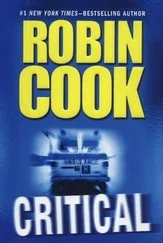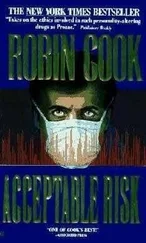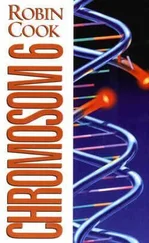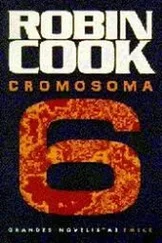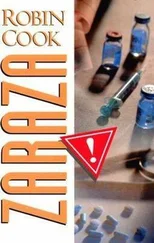“But not as good as the Forbes with their medulloblastoma cases,” Janet said.
“Definitely not as good,” Sean said.
Sean loaded himself and Janet with reagents from the storeroom; then they started back to his lab.
“This is an exciting time in biological science,” Sean said. “The nineteenth century was the century for chemistry; the twentieth century was the century for physics. But the twenty-first century will belong to molecular biology; it’s when all three — chemistry, physics, and biology — are going to merge. The results will be astounding, like science fiction come true. In fact, we’re already seeing it happen.”
By the time they got back in the lab Janet found herself becoming genuinely interested despite the day’s emotional traumas and her fatigue. Sean’s enthusiasm was infectious.
“What’s the next step with these medicines?” she asked.
“I’m not sure,” Sean admitted. “I suppose we should see what kind of reaction we get between the unknown antibody in the large vial and Helen Cabot’s tumor.”
Sean asked Janet to get out some scissors and a scalpel from a drawer near where she was standing. Sean took the cooler over to the sink, and after putting on a pair of latex rubber gloves, he lifted out the brain and rinsed it off. From beneath the sink he pulled out a cutting board. He put the brain on the board.
“I hope I don’t have trouble finding the tumor,” he said. “I’ve never tried to do anything like this before. Judging by the MRI we did in Boston, her largest tumor is in the left temporal lobe. That was the one they biopsied up there. I suppose that’s the one I should go after.” Sean oriented the brain so that he could determine the front from the back. Then he made several slices into the temporal lobe.
“I have an almost irresistible urge to joke about what I’m doing here,” he said.
“Please don’t,” Janet said. It was hard for her to deal with the fact that this was the brain of a person with whom she’d so recently related.
“Now this looks promising,” Sean said. He spread the edges of his most recent incision. At the base was a comparatively dense and more yellow-appearing tissue bearing tiny but visible cavities. “I think those spots might be areas where the tumor outgrew its own blood supply.”
Sean asked Janet to give him a hand, so she pulled on a pair of the rubber gloves and held the cut edges of the brain apart while Sean took a sample of the tumor with the scissors.
“Now we have to separate the cells,” he said, putting the sample in tissue culture medium, then adding enzymes. He put the flask in the incubator to give the enzymes a chance to work.
“Next we have to characterize this immunoglobulin,” he said, holding up the larger of the two vials of unknowns. “And to do this we have a test called ELISA where we use commercially made antibodies to identify specific types of immunoglobulins.” He placed the large vial on the countertop and picked up a plastic plate that had ninety-six tiny circular wells. In each of the wells he put a different capture antibody and allowed it to bind. Then he blocked any remaining binding sites in the wells with bovine serum albumin. Next he put a small aliquot of the unknown in each of the wells.
“Now I have to figure out which antibody has reacted to the unknown,” he said, washing each of the wells to rid them of any of the unknown immunoglobulin that hadn’t reacted. “We do this by adding to each well the same antibody that was originally in the well, only this time tagged with a compound that’s enzymatically capable of yielding a colored reaction.” This last substance had the characteristic of turning a pale lavender.
The whole time Sean was doing this test, he kept up a running explanation for Janet. She’d heard of the test but had never seen it performed.
“Bingo!” Sean said when one of the many wells turned the appropriate color to match controls he’d set up in sixteen of the end wells. “The unknown is no longer an unknown. It’s a human immunoglobulin called IgGl.”
“How did Forbes make it?” Janet asked.
“That’s a good question,” Sean said. “I’d guess by monoclonal antibody technique. Although it is not out of the question to make it by recombinant DNA technology. The problem there is that it’s a big molecule.”
Janet had a vague idea of what Sean was talking about and had definitely become interested in the process of figuring out what these unknown medicines were, but suddenly her physical exhaustion could no longer be ignored. Glancing at her watch she could understand why. It was almost midnight.
Feeling ambivalent about interrupting Sean’s enthusiasm which she’d been trying hard to bolster, she reached out and grasped his arm. He was holding a Pasteur pipette. He’d started ELISA plates for the second unknown.
“Do you have any idea of the time?” she asked.
Sean glanced at his watch. “My word, time does fly when you’re having a good time.”
“I’ve got to work tomorrow,” she said. “I’ve got to get some sleep. I suppose I could go back to the apartment by myself.”
“Not at this hour,” Sean said. “Just let me finish what I’m doing here, then I want to run a quick immuno-fluorescence test to see the level of reaction between the IgGl and Helen’s tumor cells. I’ll use an automatic diluter. It will only take a few minutes.”
Janet reluctantly agreed. But she couldn’t sit on a stool any longer. Instead she dragged out an armchair from the glass-enclosed office. Less than half an hour later, Sean’s enthusiasm went up another notch. The ELISA test on the second unknown had identified three cytokines: interleukin-2, which as he explained to Janet was a T lymphocyte growth factor; tissue necrosis factor alpha, which was a stimulant for certain cells to kill foreign cells like cancer cells; and interferon gamma, which was a substance that seemed to help activate the entire immune system.
“Aren’t the T cells the ones that disappear in AIDS?” Janet asked. She was having progressive difficulty staying awake.
“Right on,” Sean said. He was now holding a number of slides on which he’d run fluorescence antibody tests at different dilutions of the unknown immunoglobulin. Slipping one of the very high dilution slides under the objective of the fluorescein scope, Sean put his eyes to the eyepiece.
“Wow!” he exclaimed. “The intensity of this reaction is unbelievable. Even at a one to ten thousand dilution this IgGl antibody reacts with the tumor four plus. Janet, come and take a look at this!”
When Janet didn’t respond, Sean looked up from the eyepieces of the binocular scope. Janet was slouched in the chair. She’d fallen fast asleep.
Seeing Janet sleeping, Sean immediately felt guilty. He hadn’t considered how exhausted she must be. Standing up and stretching his tired arms, he stepped over to Janet and looked down at her. She seemed particularly angelic in her repose. Her face was framed by her fine blond hair. Sean felt an urge to kiss her. Instead, he gently shook her shoulder.
“Come on,” he whispered. “Let’s get you to bed.”
Janet was already buckled in Sean’s car when her sleepy mind reminded her she’d brought her own car that morning. She mentioned it to Sean.
“Are you in any condition to drive?” Sean asked.
She nodded. “I want my car,” she said, leaving no room for discussion.
Sean pulled around to the hospital and let her out. Once she had her car started, he let her lead the way. And as they pulled out into the street, Sean was too intent on Janet to notice the dark green Mercedes which slowly began to follow them both without the benefit of its headlights.
Читать дальше
